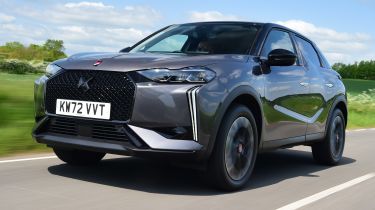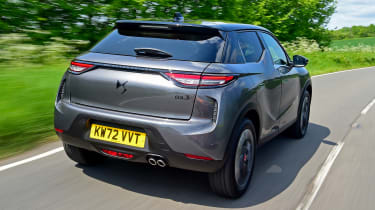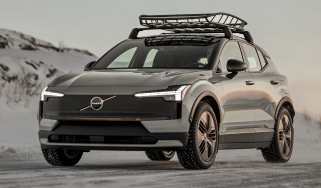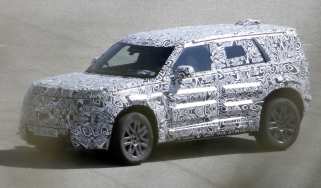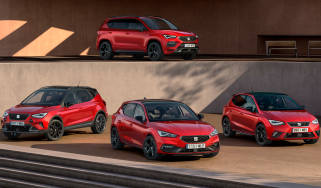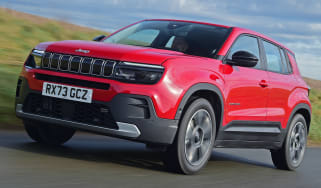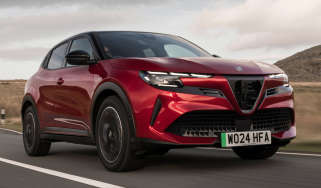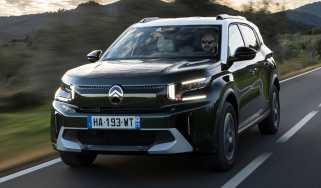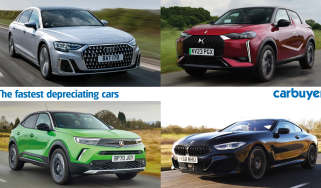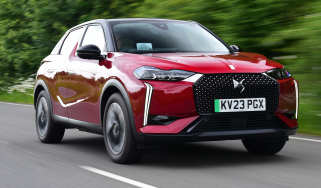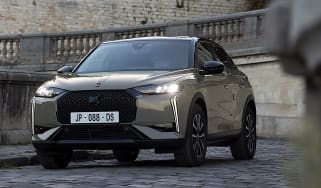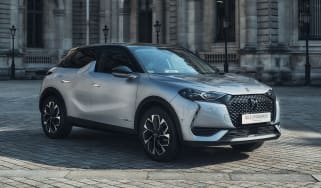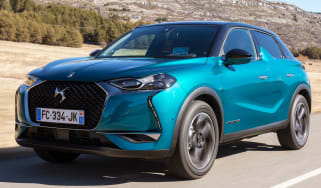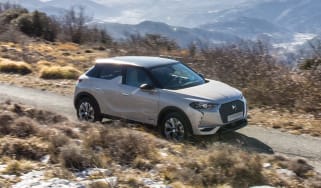DS 3 review – stylish small SUV, but lacks practicality
"The DS 3 is a funky small SUV available with petrol, mild-hybrid or electric power. It's okay to drive, but could do with a bit more interior space"
Pros
- Distinctive styling
- Electric version available
- Fun to drive
Cons
- Slightly cramped interior and small boot
- Unremarkable drive and ride quality
- Can get expensive with options
Verdict – is the DS 3 a good car?
The DS 3 is no longer a small hatchback like the previous model, instead morphing into a higher-riding SUV that aims to offer the prestige of the fashionable bodystyle. Its styling adds to its appeal, and it’s fitted with some impressive engines. Sadly, though, despite comfort being one of the main USPs of DS’ identity, the DS 3 fails to excel in this area. It’s also not any more practical than a traditional hatchback, feels cramped inside and can get quite expensive when specced up with options.
DS 3 models, specs and alternatives
SUVs are flying out of showrooms, and more specifically, upmarket small SUVs like this DS 3 – formerly known as the DS 3 Crossback – are proving to be especially desirable with car buyers.
Manufacturers have rushed to satisfy the uptake, releasing models like the Audi Q2, BMW X2, Lexus LBX and Volkswagen T-Roc to join the latest MINI Countryman. All share a keen focus on style, with big grilles, bright headlights and swooping rooflines that are sure to be popular with car buyers. Price-wise, the DS 3 sits in the middle to the top of the market, starting at a competitive £26,000, but stretching all the way up to more than £40k for a top E-Tense electric model. We think the better value is lower in the range, as pricier versions start to compete with cars from the class above like the Skoda Enyaq.
More reviews
In-depth reviews
Road tests
Aside from its looks, the DS 3 has a few more striking features too. For a start, it is available as an all-electric version, following the Hyundai Kona Electric and Kia e-Niro. With a range of 270 miles and a powerful 154bhp electric motor, the pure-electric DS 3 E-Tense offers more range than the standard MG ZS EV and Lexus UX.
The DS 3 is also offered with a more conventional 1.2-litre PureTech petrol (with 99bhp or 128bhp.) The first two petrol engines are likely to suit most buyer requirements, offering plenty of performance and a dose of fun too, thanks to their thrummy three-cylinder nature. The petrols all return over 40mpg, meaning all DS 3 models offer frugal running costs.
When we drove the 1.2-litre PureTech 130 with 128bhp, it revealed to us that the DS3 is better suited to this petrol powertrain than the EV E-Tense model. For 2024, a mild-hybrid version of the 1.2-litre PureTech also arrived, boasting a touch more power and around 20% better efficiency.
Despite the fact that DS as a brand is pitched as being a comfort and luxury-oriented proposition, the DS 3’s ride was a disappointment when we tested it. It’s not very composed at low speeds, feeling particularly uncomfortable over speed bumps and rebounding quite sharply on the way up. At higher speeds, the DS 3 does a better job, but fails to iron out imperfections in the UK’s pothole-riddled roads. Overall, the DS 3 is mid-pack when it comes to driving enjoyment, with the Ford Puma serving up a more fun experience.
Perhaps the DS 3's biggest failing, however, is that while it may offer more style than a family hatch, it doesn't offer much in the way of added practicality. The back seats aren't especially spacious and its 350-litre boot is smaller than the rival Volkswagen T-Roc and MINI Countryman.
Following a simplification of the range, as of late 2023 there are three trim levels, starting with Performance Line and moving up through Esprit De Voyage onto top-spec Opera. Given this is a premium spin-off brand of Citroen, all versions are fairly well-equipped. All cars get a 10.3-inch touchscreen, a digital dial cluster, keyless start, flush-fitting door handles and automatic air conditioning, so Performance Line will be good enough for most buyers.
Which Is Best?
Cheapest
- Name1.2 HYBRID 145 Pallas 5dr e-DSC
- Gearbox typeSemi-auto
- RRP£32,680
Most Economical
- Name1.2 HYBRID 145 Pallas 5dr e-DSC
- Gearbox typeSemi-auto
- RRP£32,680
Fastest
- Name1.2 HYBRID 145 Pallas 5dr e-DSC
- Gearbox typeSemi-auto
- RRP£32,680
